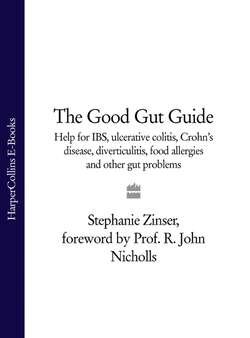Читать книгу The Good Gut Guide: Help for IBS, Ulcerative Colitis, Crohn's Disease, Diverticulitis, Food Allergies and Other Gut Problems - Stephanie Zinser - Страница 28
Self-Help for Bleeding
ОглавлениеCheck your diet: Certain foods can make you think you’re bleeding when you’re not. Beetroot, for instance, can make the stools look red. So can blueberries and other highly-coloured foodstuffs. Iron can make stools look black.
Identify the source: This isn’t always easy to do, but there are clues. Bright red blood from the anus is likely to be coming from nearby – the lower colon, rectum or anus. Darker blood will be from higher up. Black, tarry-like substances generally indicate bleeding from the stomach or small intestine.
When does it happen? Do you notice bleeding all the time or only when you pass a stool? Identifying the timing of bleeding can give your doctor good clues as to the cause.
Think about other symptoms: Is your bleeding accompanied by diarrhoea or constipation? Do you have any abdominal pain? Is there any sharp or severe pain in your bottom? Do you feel nauseous or sick?
Look at your medicine chest: Have you been taking any medicines recently – especially aspirin, non-steroidal anti-inflammatory drugs (NSAIDs, such as ibuprofen, naproxen) or other drugs? Some medicines can aggravate ulcers and cause them to bleed.
Rectal bleeding: If you are bleeding because of haemorrhoids or a split in the skin around the anus, a dab of olive oil can encourage healing and reduce pain – so too can witch hazel, which also reduces the inflammation associated with piles.
Further Information: National Digestive Diseases Information Clearinghouse, www.niddk.nih.gov/health/digest/pubs/bleeding/bleeding.htm
